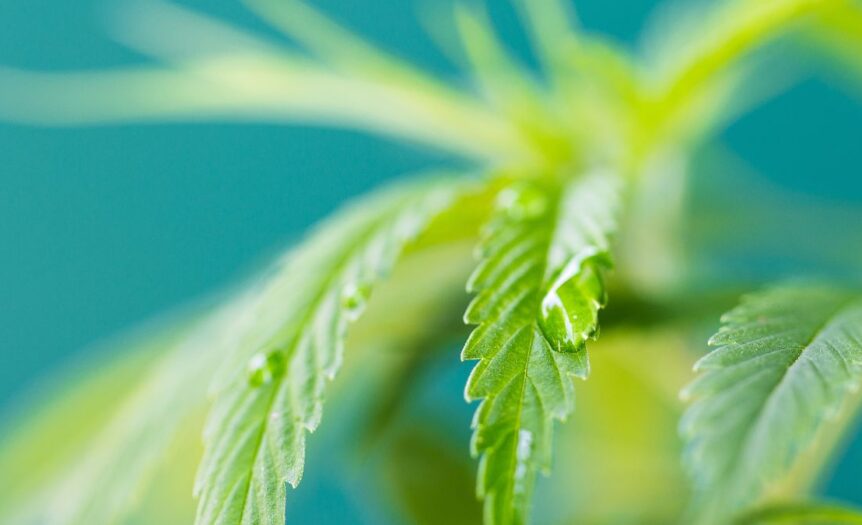Taking care of cannabis involves temperature, humidity, nutrient additives, and, most importantly, water. Here are cannabis watering tips for beginner growers.
Ensuring Optimal Water Quality
Water quality plays a key role in how well you cultivate cannabis plants. Combined with nutrient additives, it determines how well your cannabis crops develop, especially with your station’s location. For instance, even if your tap water contains calcium, it can damage your plants and irrigation system.
You ideally want to water your cannabis plants with purified reverse osmosis water, collected rainfall, bottled water, and left-out tap water with eliminated chlorine. Furthermore, cannabis needs water with specific pH levels, particularly between 6 and 7, or even 6.5, for growing in soil. Lastly, too many chemicals in your water can harm plants. So either dilute the water for crops using rain or reverse osmosis water, or let the water sit out for 24 hours.
Consider Drip Irrigation Systems
There are various cannabis watering methods, including drip irrigation systems. A drip irrigation system is an incredibly helpful watering method that helps newbie growers save money and helps the plants get more nutrients with an automated process. Drip irrigation is also particularly helpful for larger crops or grow stations in hotter climates.
Drip irrigation distributes consistent, even liquid across plants, allowing for controlled watering frequency. Furthermore, growers can control the volume of water released, which helps manage nutrient delivery.
Identifying Under- and Overwatering
Another of the watering tips for beginner cannabis growers is identifying signs of over- and underwatering. While it’s more common to overwater your cannabis plants, underwatering can also occur.
Underwatered Cannabis
Your plants will show signs of underwatering in various ways, including bent stems, no new leaf production during the vegetation stage, yellowing or browning leaves, and a lifeless, dry appearance.
If you notice signs of underwatering, using neutral-pH water and providing fertilizer after their revival can help. If they aren’t recovering, checking the water’s pH can help determine if inadequate pH levels are the culprit.
Overwatered Cannabis
Overwatered cannabis can occur when new growers don’t pay attention or overcompensate. Some signs of overwatering include muddy pot soil, swollen, discolored, or curled leaves, and wilting. Using drip irrigation systems can help distribute water evenly across all plants to prevent overwatering.
Likewise, monitoring water runoff at the cannabis container bottoms can help determine if your plants get overwatered. If water stagnates there for too long, check drainage and reduce the water flow. Lastly, implement a strict watering schedule to prevent overwatering.





 Deering Estate
Deering Estate
 Massage Envy South Miami
Massage Envy South Miami
 Calla Blow Dry
Calla Blow Dry
 My Derma Clinic
My Derma Clinic
 Sushi Maki
Sushi Maki
 Sports Grill
Sports Grill
 The Healthy Kitchen
The Healthy Kitchen
 Golden Rule Seafood
Golden Rule Seafood
 Malanga Cuban Café
Malanga Cuban Café

 Kathleen Ballard
Kathleen Ballard
 Panter, Panter & Sampedro
Panter, Panter & Sampedro
 Vintage Liquors
Vintage Liquors
 The Dog from Ipanema
The Dog from Ipanema
 Rubinstein Family Chiropractic
Rubinstein Family Chiropractic
 Your Pet’s Best
Your Pet’s Best
 Indigo Republic
Indigo Republic




 ATR Luxury Homes
ATR Luxury Homes


 2112 Design Studio
2112 Design Studio
 Hamilton Fox & Company
Hamilton Fox & Company
 Creative Design Services
Creative Design Services
 Best Pest Professionals
Best Pest Professionals
 HD Tree Services
HD Tree Services
 Trinity Air Conditioning Company
Trinity Air Conditioning Company
 Cisca Construction & Development
Cisca Construction & Development
 Mosquito Joe
Mosquito Joe
 Cutler Bay Solar Solutions
Cutler Bay Solar Solutions


 Miami Royal Ballet & Dance
Miami Royal Ballet & Dance
 Christopher Columbus
Christopher Columbus
 Pineview Preschools
Pineview Preschools
 Westminster
Westminster
 Carrollton
Carrollton
 Lil’ Jungle
Lil’ Jungle
 Frost Science Museum
Frost Science Museum
 Palmer Trinity School
Palmer Trinity School
 South Florida Music
South Florida Music
 Pinecrest Orthodontics
Pinecrest Orthodontics
 Dr. Bob Pediatric Dentist
Dr. Bob Pediatric Dentist
 d.pediatrics
d.pediatrics
 South Miami Women’s Health
South Miami Women’s Health

 The Spot Barbershop
The Spot Barbershop
 My Derma Clinic
My Derma Clinic




 Miami Dance Project
Miami Dance Project

 Rubinstein Family Chiropractic
Rubinstein Family Chiropractic
 Indigo Republic
Indigo Republic

 Safes Universe
Safes Universe
 Vintage Liquors
Vintage Liquors
 Evenings Delight
Evenings Delight





 Atchana’s Homegrown Thai
Atchana’s Homegrown Thai
 Baptist Health South Florida
Baptist Health South Florida

 Laser Eye Center of Miami
Laser Eye Center of Miami
 Visiting Angels
Visiting Angels
 OpusCare of South Florida
OpusCare of South Florida

 Your Pet’s Best
Your Pet’s Best





 HD Tree Services
HD Tree Services
 Hamilton Fox & Company
Hamilton Fox & Company


 Creative Design Services
Creative Design Services